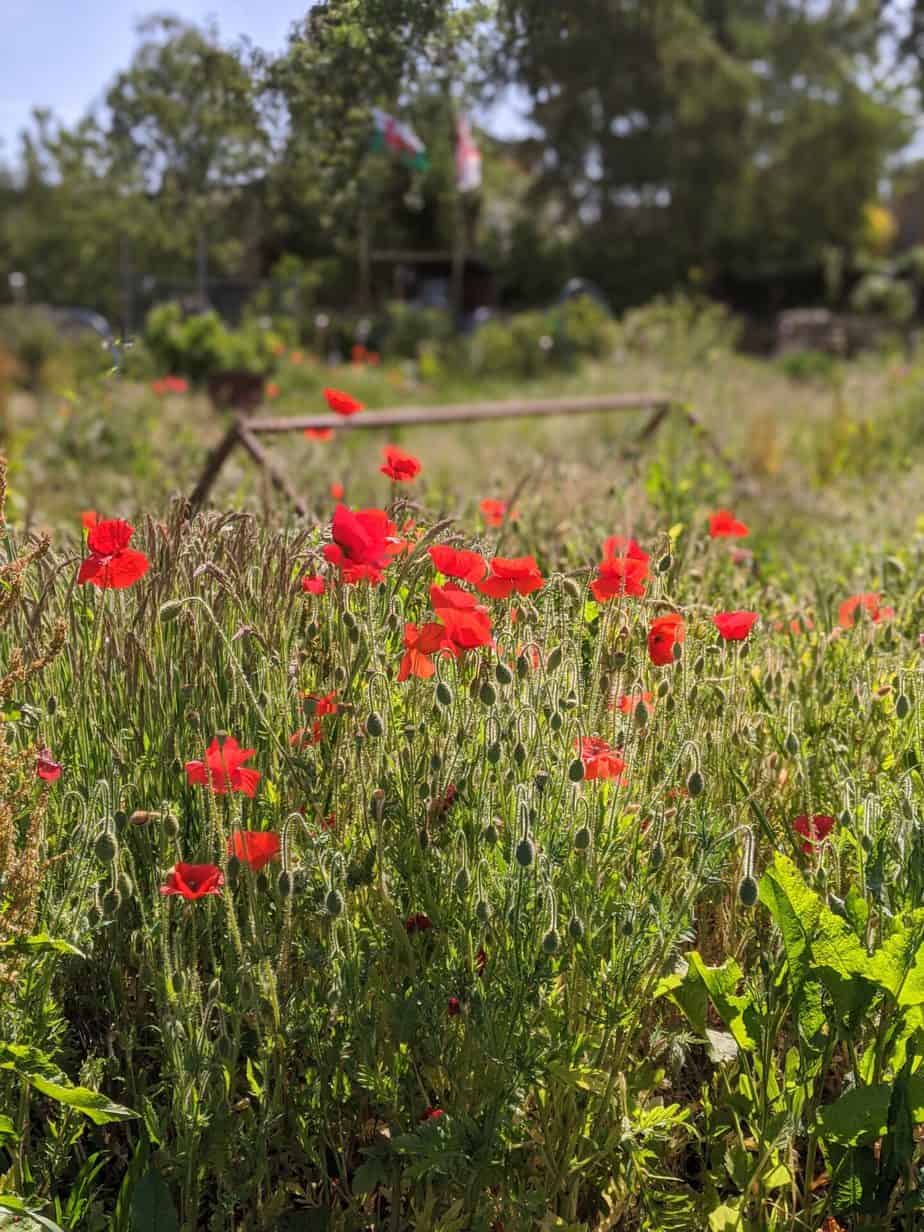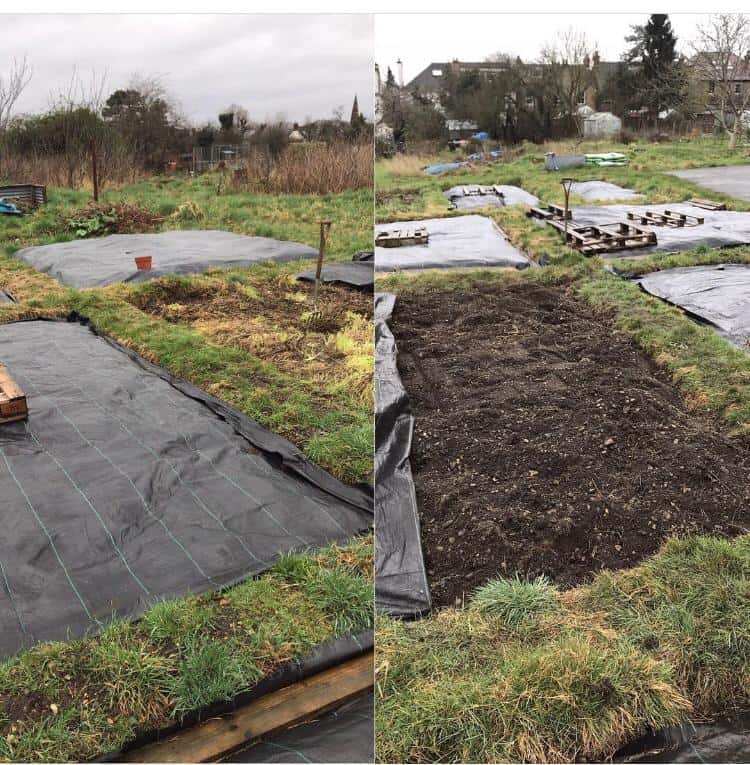We may earn money or products from the companies mentioned in this post, and as an Amazon Associate I earn from qualifying purchases. Please see my full disclosure for more information.
Have you been trying to grow your own vegetables in the past few months, or just starting to do a bit of research into it? Whether you have access to a small balcony or dive straight into getting an allotment of your own, growing your own vegetables is something that can be achieved by everyone. Now in my second year of growing my own vegetables from my allotment, these tips are aimed at beginners looking to get started.

In the past few months, the benefits of having access to your own, home-grown vegetables have become more apparent than ever. When visiting the supermarket guarantees hour-long queues and limited options, those of us with our own vegetable gardens and allotments have been thankful for being able to avoid the chaos altogether.
My experience with growing your own vegetables
A few years ago now, I was in a bit of a weird place. I had been home from my year away living as a digital nomad for a couple of months, and was experiencing some major post-travel blues. I couldn’t really settle at home because a part of my mind was still ready to keep moving, to keep travelling, to cut ties.
It took a visit to some good friends in Nottingham to force me to take a step back and recognise that I was so caught up in trying to figure out where I would go in the future that I wasn’t allowing myself to actually live in the present. Those same friends had just recently obtained an allotment, something that I had always thought I’d like to do some day.
In an effort to allow myself to just be and stop worrying about where I would be in six months time, I decided to apply for an allotment plot as soon as I got home. A few months later, and this overgrown strip of land was ours for £40 a year (it turned out my parents were as keen on the idea of growing their own veg as I was, so we took it on as a project together).
The below photos are from November 2018. When we got our allotment, it was literally just a grassy field with some extremely overgrown blackberry bushes. Several weeks of digging over the turf and then covering it with weed-suppressing membrane got us here: 9 vegetable beds, dug over and ready to go when planting season came around in April/May time.

Our aim is to essentially be able to live off our allotment in terms of fruit and vegetables – seeing as I eat a plant-based diet, that’s going to mean massive savings!
Growing Your Own Vegetables Tips For Beginners:
1. Start growing your vegetables inside
Planting your seeds directly into the ground (or in pots) can definitely work – but it’s not guaranteed, plus leaves your seedlings vulnerable to frosts, pests, and insects. Growing your seeds indoors first gives them a much better head-start, massively increasing your chance of success.
We decided to get a greenhouse to help us start our vegetables off before planting them out in the allotment, which is great if you’ve got the space in your garden or allotment and the spare cash to invest in one.
If not, a greenhouse is definitely not essential! Simply allocating a windowsill in your home for seedlings before planting them into your garden or into pots for on your balcony will work just fine.
2. Read Up On What Needs Planting And When
I’ve got two books which I consult regularly side by side:
- Allotment Month By Month – Alan Buckingham
- Allotment Handbook: The Beginners’ Guide to Growing Crops in a Small Place
I use the month-by-month book to see what tasks need to be done each month, and then I consult the handbook to see exactly what I need to do to successfully grow a certain fruit or vegetable.
As someone who likes to be uber-prepared with every new task I approach, using these two books together has been really helpful and ensured I planted my seeds at the correct time to reduce the chance of things dying in late frosts or due to being uncovered and exposed to birds!
3. Don’t be afraid to ask for help!
One of my favourite things about our allotment community is how friendly everyone is. Our allotment neighbours have turned out to be fantastic sources of information for getting our plot ready for the summer.
In our first year, I lost count of how many people offered us plant cuttings from their own allotment to get us started, and try to extend this same kindness to other new allotment holders in turn.
If you’ve just got an allotment and don’t know where to start or if you’re doing something right – just ask. Most people are more than happy to talk about all things veg! If you’re sticking to growing your vegetables in your own home, just ask around – you’re sure to stumble across someone with a shared passion and I’m willing to bet that they’ll be only too happy to offer some gems of wisdom!
4. Go Slowly
If I was working on my allotment plot alone, I’d definitely be overwhelmed with how much work it involves.
Luckily, there are three of us working together, making everything a lot more manageable.
Whether you’re attempting to grow your own veg alone or as a group, one of the best tips I’ve learned is to go slowly. Don’t try to cultivate the entire plot in a weekend – you’ll be exhausted and ache the day after and not want to go back. Little and often seems to be the key.
Allotment & garden specific tips for growing your own vegetables
5. Mark Out Your Beds
We were quite lucky with the allotment we inherited, because the man who previously owned our plot kept (from what we’ve been told) on top of things with great success, and had clearly marked out the border for his vegetable beds.
So although our plot was completely overgrown (it essentially looked like a huge patch of grass and weeds), it was fairly easy to determine exactly where the vegetable beds previously were, and mark them out for ourselves.
If you don’t get so lucky, you’ll need to consider how you want your beds to look. Some plots make use of the entire area, whereas others clearly mark their beds out into square or rectangles with grass paths or paving slabs in between.
6. Cover With Weed Suppressing Membrane
One of the first things we did with our allotment back in November was to cover all of the beds with weed suppressing membrane, which you can buy from garden centres or cheaply online.
We were quite lucky to get our plot in November, as we could then cover the beds and allow the membrane to kill off the weeds underneath throughout the winter.
I’d really recommend investing in some weed suppressing membrane to any new allotment owner. Once we had covered the beds, we could relax knowing that even if we didn’t use half our plot this summer, the weeds aren’t going to get any more out of control. When February/March rolled around, we simply uncovered the bed and dug it over once the weeds had died off significantly. Then we re-covered the bed until we were ready to plant fruit and vegetables out!

7. Plan Out What You’re Going To Grow
Make a list of the things you’d really like to grow. A good tip is to consider:
- The size of your plot
- How much time you can actually invest in your allotment
If I’ve learned anything in the past couple of months, it’s that you don’t want to overwhelm yourself by planning on growing everything and anything (although admittedly, that’s kind of exactly what we’ve done!).
I’d strongly recommend planning what you’ll grow and in which beds before you begin buying seeds and planting veg.
8. Consider Getting A Greenhouse
A big investment we made in our allotment was buying a greenhouse, which is in our garden. This saves us having to walk round to the allotment every day to water the seedlings before they’re ready to go outside, and gives your seeds a big headstart over planting them directly outdoors.
Of course, not everyone can afford a greenhouse (or has the space for one), but it’s been a really fantastic investment for us. Everything we planted starting popping up all at once and going in there to water my plants is honestly one of the most relaxing parts of my entire day.

I hope these allotment ideas are helpful to you, whether you’re a total beginner with a new allotment plot, or even if you’re trying to grow a vegetable patch in your garden!

